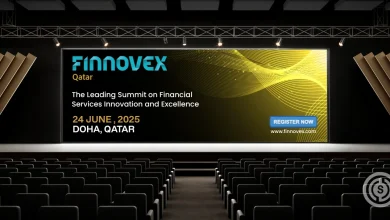“Can Blockchain Transform Supply Chain and Logistics?” Answers, Erol User, Chairman of BlockchainArmy

Blockchain has recently found several applications ranging from the beauty and entertainment industry to banks and government databases. Supply chain and logistics is another important area where blockchain is finding growing applications. Management of supply chains is a complex task, especially keeping a tab on all the links from creation to distribution of goods. The product also plays an important role in determining the complexity of the supply chain and some products can involve multiple stages, a large number of invoices and payments, a multitude of people, geographical locations and entities. All these add complexity to an already lengthy process, which mostly lacks transparency. This has lead to a keen interest in the application of blockchain, which is believed to have the potential to transform the supply chain and logistics industry. The use of blockchain has already been bringing in subtle yet significant changes in this industry. Therefore let us examine those aspects and the role of blockchain consulting company BlockchainArmy in ushering this change.
What is the Need for Blockchain?
Supply chains today are complex and broken because trade has gradually evolved and is no longer simple and local. As international trade has developed, supply chain systems have also seen changes like “the shift to haul freight via trucks rather than rail or the emergence of personal computers in the 1980s that led to dramatic shifts in supply chain management”. Today manufacturing is globalized and is no longer regional and a major part of it is done in China, which has added complexity to supply chain management. Due to the lack of transparency, it is rarely possible for customers to know the actual value of products. Even in cases when there is suspicion of any illegal or unethical activity, it is difficult to investigate supply chain networks thoroughly. Suppliers and vendors often join the dots based on ‘who needs what, when and how’ which creates inefficiency in the system.
What are the Advantages of Bringing in Blockchain?
Most of us are familiar with the application of blockchain for cryptocurrency, particularly Bitcoin, but blockchain technology has far more applications than cryptocurrency. Being a distributed digital ledger system, it can be used for “exchange, agreements/contracts, tracking and payment.” It has many advantages like transparency as every transaction is noted on a block and recorded on multiple copies of the ledger, distributed across various nodes. It is secure and autonomous as every block is linked to the one before and after it. It is not controlled by any central authority and adds a degree of efficiency and transparency to the supply chain. Blockchain has a built-in chain of command and with its efficiency and scalability, it would facilitate the process from warehousing to delivery and payment.
The consensus is another benefit of using blockchain as it eliminates the chances of any dispute as all entities involved in the chain have the same copy of the ledger. This adds reliability and integrity to the network with every individual being able to view the chain of ownership for an asset on the chain. Records of all transactions on the blockchain network cannot be deleted, which adds transparency in case of any dispute.
Widespread Use of Blockchain
Blockchain technology and the added advantages that it comes with, like the transfer of funds without the involvement of any central banking authority, makes it ideally suited for the contemporary globalized network of the supply chain. Tomcar, the Australian vehicle manufacturer, makes payment to its suppliers through Bitcoin. Not just an automobile, the food industry has also recognized the advantages of blockchain as they need to keep records to trace all the products from their source. For instance, Walmart applies blockchain to keep a check on the pork that comes from China and “the blockchain records where each piece of meat came from, processed and stored and its sell-by-date.” Other food-based companies like Unilever, Nestle, Dole and Tyson are also making use of blockchain for such purposes.
Project Provenance is another example of blockchain technology implementation where consumers know the companies they associate themselves with are the ones that share values of environmental leadership, sustainable manufacturing, production, etc. This is because of the transparency that blockchain brings in to the process. The world’s largest mining firm, BHP Bilton, has decided to use blockchain to keep an accurate record and track the mining process with its vendors. Besides adding efficiency, it will facilitate effective communication of the company with its partners. Blockchain is also being used by diamond giant De Beers which helps in tracking the mined stones from their source to the point of sale to consumers. Consumers are also satisfied as they feel they have bought the genuine product and the company can avoid ‘conflict’ or ‘blood diamonds.’
A Bright Future Ahead
Supply chain startups like Cloud Logistics are also looking forward to using blockchain-enabled solutions to offer improved and efficient solutions at lower costs. Soon several others will also follow suit as they would gradually understand the potential of blockchain-enabled solutions for the supply chain and logistics industry. The demand for blockchain technology application would witness an unprecedented growth in the coming years as it has been rightly anticipated by BlockchainArmy Chairman and Co-founder Erol User.



